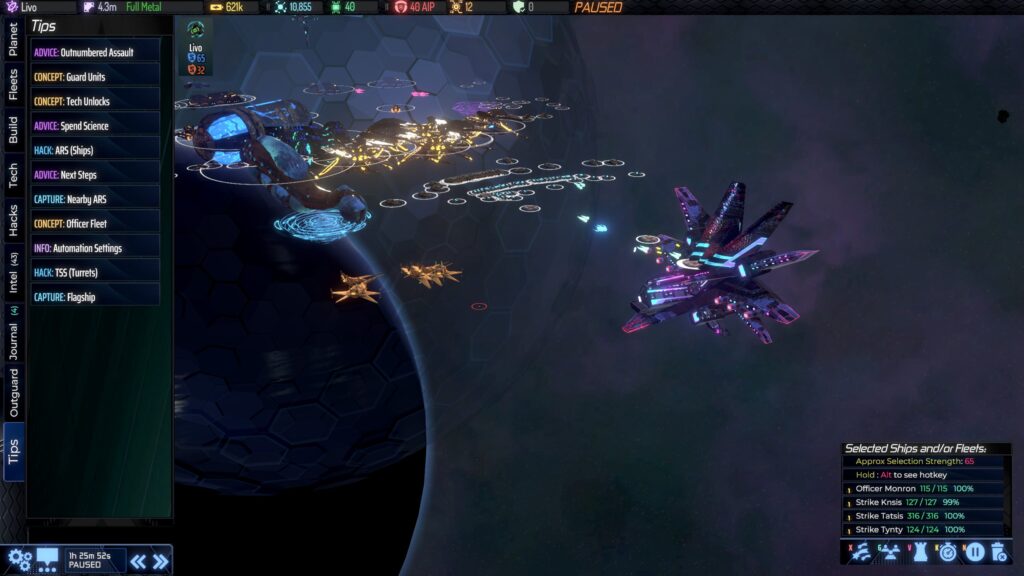
I added this to my to play list a long time ago because it’s a noteworthy innovation on the RTS genre and originality should always be rewarded. It’s surprisingly rare in video games for someone to attempt to make something really different as opposed to revised versions of familiar games. This title introduces at least one new way of thinking about strategic games and several ways to streamline repetitive actions. Unfortunately this still is an RTS game which as you should all know by now isn’t my favorite genre and playing it is a pretty dry and time-consuming experience.
The premise here that an AI has taken over the galaxy and perhaps even more than that. You control the human resistance and you are hopelessly outmatched. Yet victory is still possible. The AI has to contend with many threats including extra-galactic alien ones so one tiny rebel planet is hardly worth its attention. So if you carefully make use of your ragtag fleet you can grab more planets, ships and other resources to become stronger. As you do so, the AI will raise its estimation of your threat level and increase the forces devoted to crushing you accordingly. Even so, you can confuse the AI and minimize your threat profile by destroying its processing nodes scattered around the galaxy while continuing to strengthen your fleet. Your objective is to locate the AI’s homeworld and destroy the AI Overlord itself. But be warned, the AI can do the same to you. No matter how many planets you control, the AI can win just by targeting your command station on your homeworld and destroying it. If the AI is finally convinced that you are a serious threat, it will attempt to do just that.
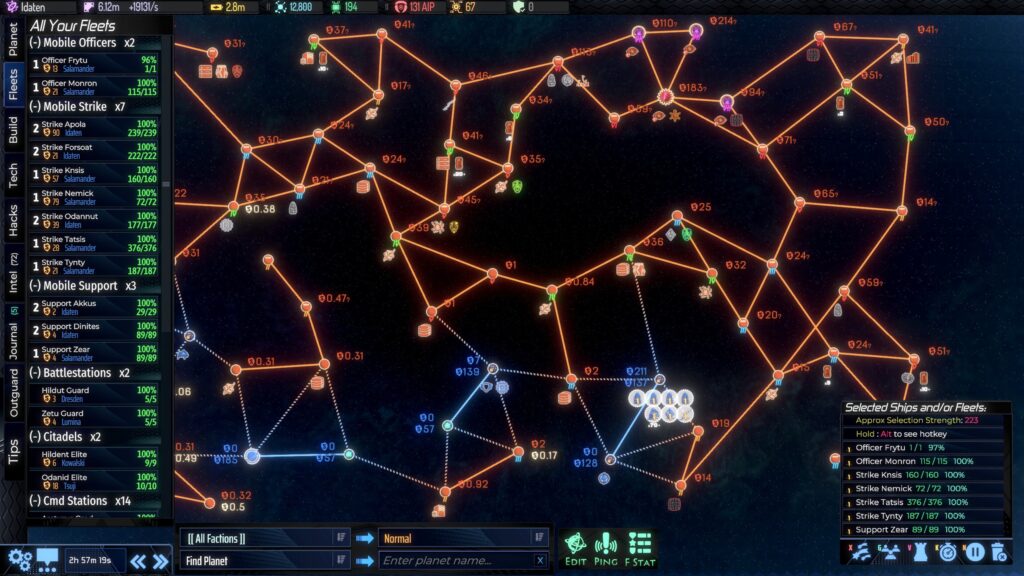
Everyone knows that in 4X space strategy games, you want to expand as fast as possible to grab as much resources and galactic real estate as you can before going to war. AI War 2 superficially resembles this genre but its mechanics actively discourage reckless expansion. The most important meter in the game is AI Progress (AIP) which represents how highly the AI rates you as a threat. Destroying the command stations that the AI uses to control planets raises AIP, so does taking control of powerful derelict ships or destroying some of the AI’s key structures. As AIP increases, the AI’s ships become more powerful and it spawns more powerful fleets to attack your planets. At certain points, the AI will even spawn monstrously powerful unique ships to hunt for your homeworld. You quickly learn that you really do want to keep AIP as low as possible.
On the other hand, you must grab planets to increase your metal income which is used to build ships and your energy income which acts as a kind of overall upkeep for everything you own. You can spend Technology Points to purchase upgrades for your ships and stations but these come from planets as well and each planet provides a finite amount of them. One last resource are Hacking Points which you spend to ostensibly hack the AI to weaken the defenses of a planet but more usually to steal ship and turret designs. Again, this is a non-renewable resource that comes from grabbing planets. In fact taking over planets is the main way that you will scout out the rest of the galaxy and there is a mechanic to strongly discourage simply sending out a powerful, self-sufficient fleet to smash up the AI without setting down roots anywhere. If you send out fleets too far from your own planets, increasingly powerful AI fleets will appear out of nowhere to punish you.
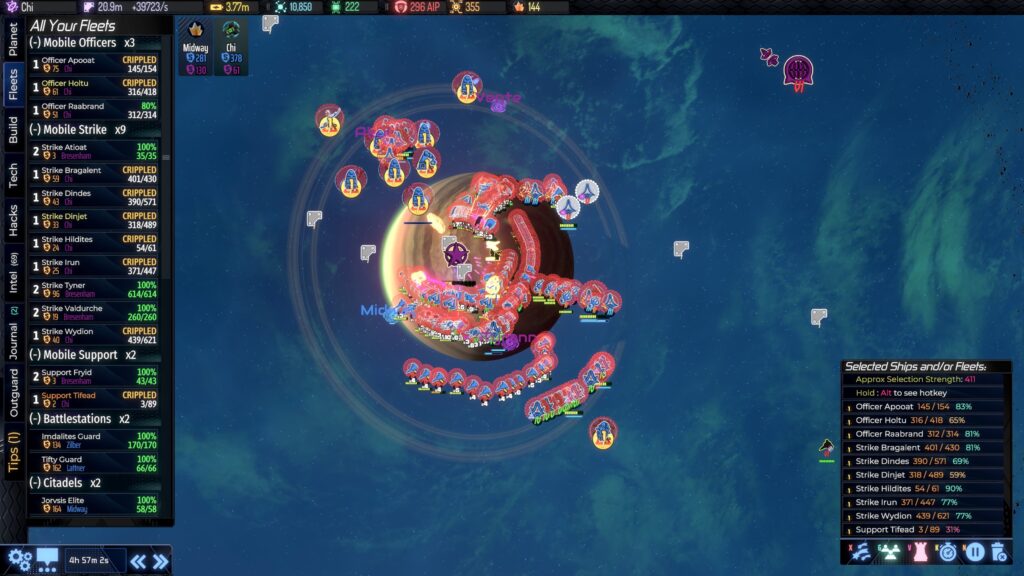
The game streamlines management tasks in many ways. One of them is that you can choose which turrets and other defensive structures to build on your planets, up to the cap for that planet, but you can’t directly build ships yourself. Instead you come across derelict flagships that you claim by grabbing the planet it is on. Each flagship will have a predetermined fleet of ships attached to it and your factories will automatically build those ships whenever they are destroyed. You can trade lines of ships between flagships and add lines by hacking AI research stations as mentioned above to have more ships attached to a given flagship. Planet management is simple too. You only have to decide between building an economics station which maximizes metal and energy income but has almost non-existent defensive options, a military station that maximizes defense at the expense of resources or a logistics station that is a compromise between the two. Another excellent idea this game has is the Intel tab which suggests objectives if you’re at a loss as to what to do next.
One particularity of this game is that the AI is usually rather quiescent. After all it already controls the whole galaxy and has no need to expand. Instead it becomes increasingly active as AIP rises and you are always warned well in advance of the AI’s aggressive actions. Even when an assault wave is coming, you’re given a two minute advance warning including an estimate of the strength of the wave and the direction it is coming from. This effectively removes most of the hectic feeling of RTS games as the AI is so reactive and follows fixed, predictable rules in how it behaves. Even so knowing where the AI is going to attack may not help since it is capable of throwing massive waves at you if you provoke it too much. Later in the game and much more so at higher difficulties, the AI is however able to force you to react. One example is the appearance of Instigator Bases which makes nasty things happen until you track down where it is and destroy it. One version for example makes AIP automatically increase on a regular schedule until it is destroyed which gives you a very strong motivation to destroy it as soon as possible.
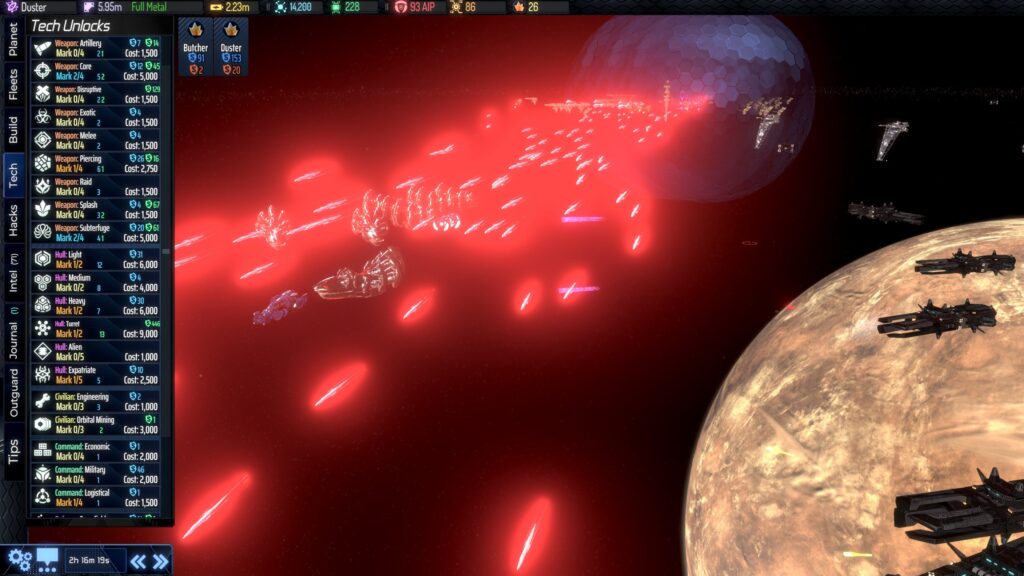
One result of this design is that it feels very game-like rather than world-like. With the way the AI behaves so tightly constrained by the rules, it feels almost like a board game as you decide which planet is worth spending the AIP to take and which one you can skip. The rules were all clearly devised to bring about the type of gameplay the designers envisioned and rarely feel organic. For example without the rule to punish the player for sending fleets far out from planets, the optimal strategy would be to just sit back and scout for perfect information of the map and then just take only the best planets you need to build a fleet strong enough to attack the AI Overlord. I feel it would be more organic to impose for example an increasingly high energy penalty if you venture too far. The game doesn’t like you to take too long in attacking an AI planet as well, for example by taking a small force and trying to kite the enemies in it for a long time. If your force is too weak and stays there too long, it’ll trigger a massive counter-attack wave.
Judging from the number and types of achievements on Steam, the developers clearly intend you to play many, many games of it. Given that even at easy difficulty a game might take more than 5 hours to win, that’s quite an undertaking. Of course, I can see the richness of the many levels of AI difficulty, giving each AI a different personality, adding other factions and weirdness into the mix for extra chaos and so on. Clearly there is also a lot of scope for player skill to shine. It’s possible to assemble specialist fleets with specific bonuses to counter AI fleets and fun ways of dealing with powerful AI defenses. One especially interesting defensive emplacement the AI has is the Ion Eye or Plasma Eye which sleeps so long as your forces present in its system is weak but wakes up to wreck massive destruction if the AI is outnumbered. Worst, it is invulnerable while it is protected by guard towers so the preferred option is to sneak in a force to try to take it down while it is asleep.
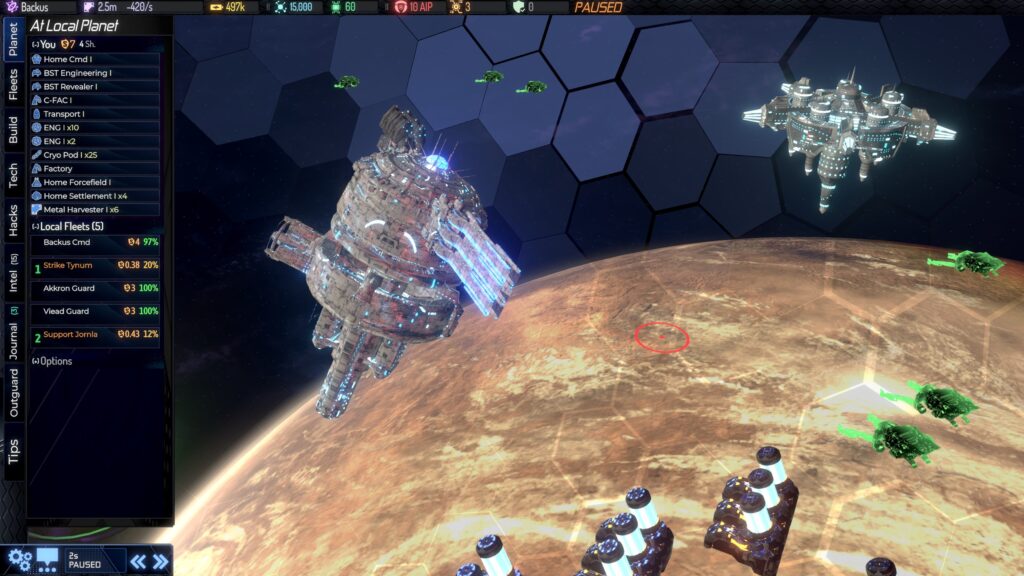
Unfortunately I find playing this to be a rather dry experience and everything feels like it has so little weight. Since there are no morale issues, losing a planet to the AI doesn’t actually mean anything beyond the loss of resources. Planets don’t have population so it’s quick to rebuild a planet to full production even if you lose one. A viable strategy might be to establish a planet out there by itself to invite the AI to take it. After losing it, you could send in a force to take it back and use this endless back and forth to distract the AI. It should work I think but again, it’s very gamey. The game really is all about rushing for the AI Overlord while surviving as best you can while trying to do so. Despite all the variation in AI types, third party factions etc., in the end it’s still all about this narrow path to victory and that feels kind of repetitive to me.
Anyway given how little I like RTS games there was never much chance of me spending a lot of time on this. But I do admire the effort put into trying a new design and I’m sure other developers will pick up lessons from how it simplifies management and automates repetitive tasks. I also note that this isn’t a new game but the developers still seem to be very active on the Steam forums. I found it really interesting when a lead designer commented that he considers having the AI on difficulty 6 to be a fun game, at 7 to be challenging and on 8 to be impossible. They are still patching and even adding features to the game so if you are the type of gamer to enjoy a novel RTS challenge I think this would be a really good title to check out.